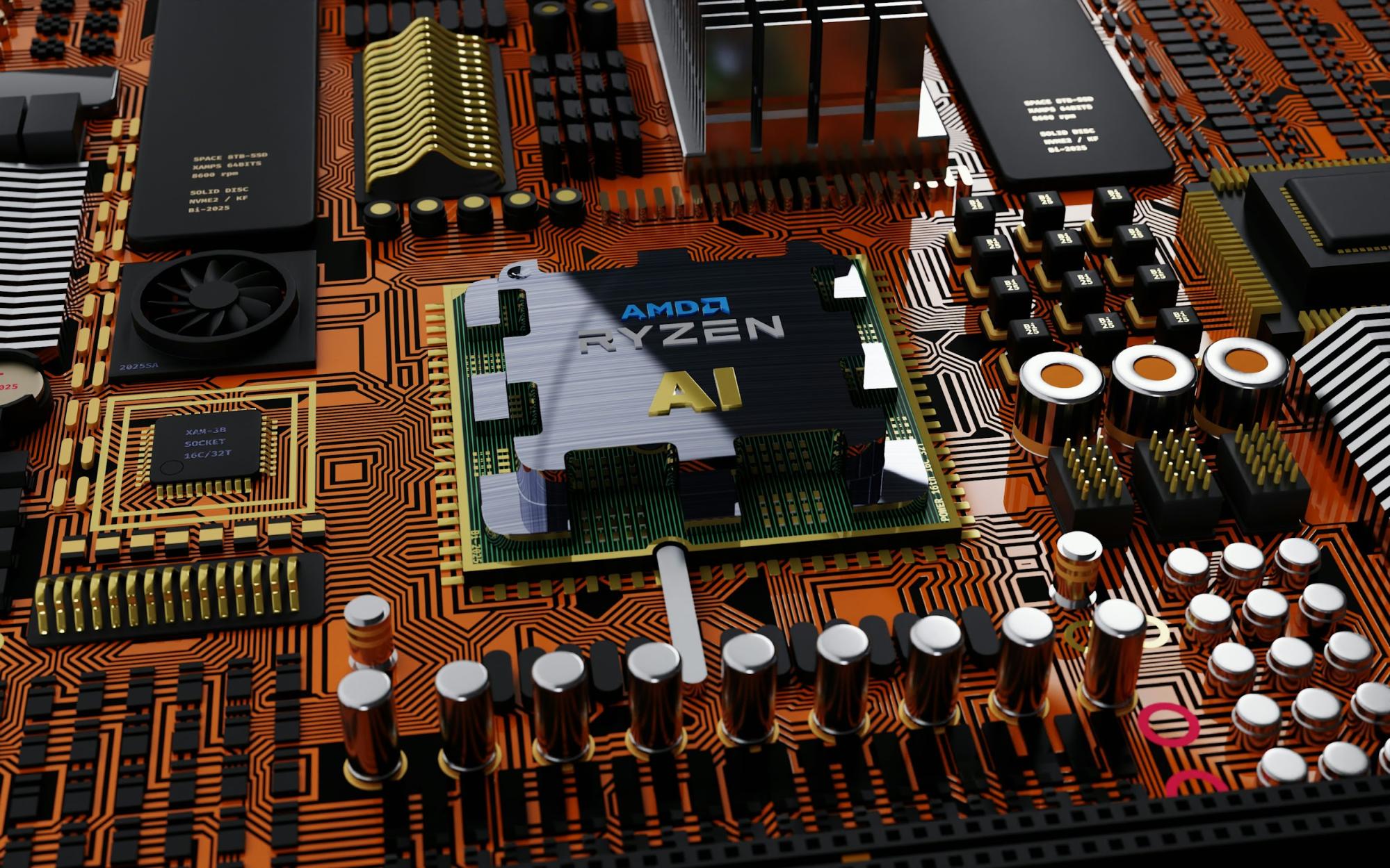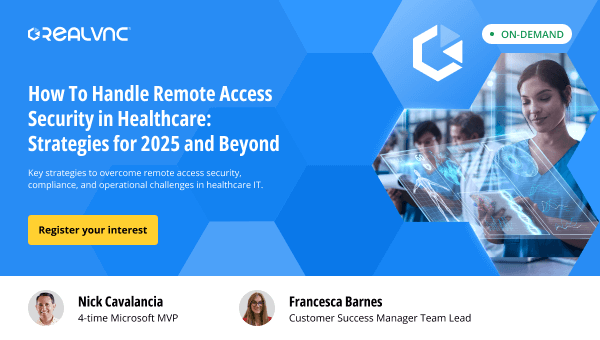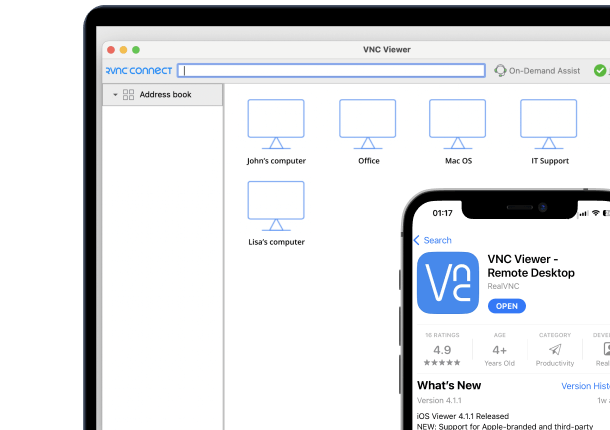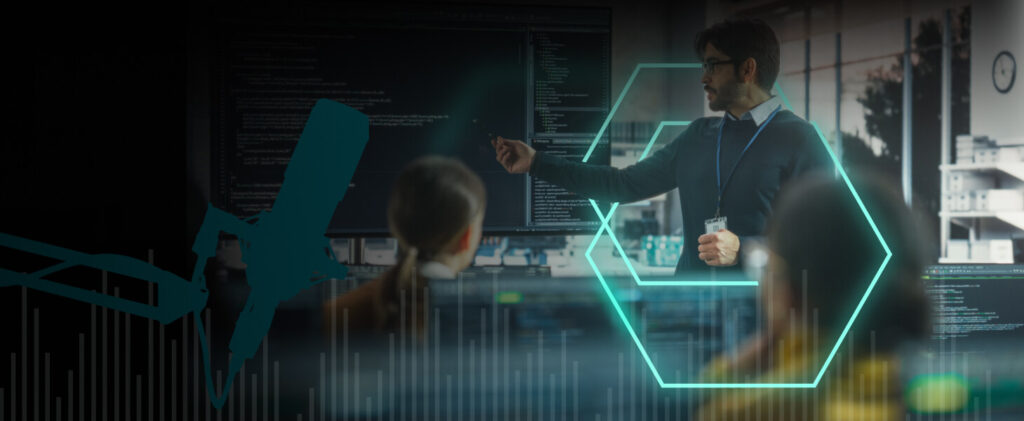The sheer pace at which successful attacks are being carried out, and the complexity of data theft, phishing, and extortion campaigns have become almost systemic. Cybercrime in 2024 has become almost like a well-oiled machine that can more or less be considered a business model in and of itself.
These threats are transforming rapidly and, fortunately, our means of defense, mitigation, and prevention are transforming alongside them.
Today, having good cybersecurity policies and procedures is not just about keeping your business out of the crosshairs, but also ensuring its ongoing success.
With this in mind, this article will explore the most effective and top cybersecurity trends for 2024 that can fortify your business and keep you well ahead of emerging cyber threats.
The Evolving Cybersecurity Landscape
Compared to previous years, 2024 has seemingly taken on a life of its own when it comes to current and evolving threats, threat intelligence, and security challenges.
But what has made 2024 so different from previous years? In this section, we’ll take a look at the main drivers behind these significant increases in cybercrime.
Cyber threats and data breaches: A persistent concern
As with 2023, cyber threats and data breaches continue to top the list of major concerns for businesses in 2024.
The year-to-year occurrence of ransomware attacks continues to increase. In 2024, we see an alarming 55.5% rise, with cybercriminals predominately targeting sectors such as business services, retail, manufacturing, finance, and healthcare.
Globally, the average cost to business of a cyber attack currently sits at $4.4 million, but for sensitive industries such as healthcare, the figure now exceeds $5 million. The USA remains the top target for these attacks, followed by the UK, European countries like France and Germany, Canada, and Australia.
Cybercrime-as-a-Service (CaaS) — the business model that provides a corporate-like structure to cybercrime — is also on the rise. Notorious cybercrime families such as LockBit3.0, Blackbasta, Play, Akira, and 8Base are expected to lead the charge.
These groups operate similarly to legitimate businesses but use black hat principles. They develop and sell ransomware (Ransomware-as-a-Service) and hacking software and orchestrate large-scale phishing attacks.
The rise of nation-state actors and supply chain attacks
Nation-state actors are those who have unofficial permission from a government to conduct cybercrime-related activities. Motives for these threat actors generally range from espionage to complete political disruption, all of which pose a significant threat to government and industry alike.
These sophisticated and well-resourced cyber attackers typically target critical sectors of a country’s critical infrastructure, such as education, energy, government, NGOs, think tanks, IT, and communications.
Their tactics generally involve penetration of supply chains, exploitation of vulnerabilities in third-party software, data breaches, infiltration of IT and software companies, and, in many cases, social engineering attacks and subjugation.
Industries that are typically targeted by nation-state actors must adhere to mandatory reporting and hardening standards set in legislation such as the Cybersecurity Information Sharing Act and the NIST Cybersecurity Framework (NIST CSF).
Supply chain networks are considered one of the most at-risk sectors for nation-state threat-actor attacks. In 2023, a report by IDTheftCenter showed that attacks on over 1700 supply chain entities impacted over 10 million people.
An increase in security posture for supply chain risk management is increasingly important in 2024, as these security incidents are expected to rise significantly.
IoT vulnerabilities and automotive cyber security threats
There are nearly 18 billion Internet of Things (IoT) devices around the world. Each of these devices introduces a new endpoint and another vulnerability surface to be exploited.
Commonly implemented cyber attacks on IoT devices generally include command and control (C2/C&C) for espionage, access to sensitive data from sensors, backdoor network access to automated security systems, and inclusion in extensive botnets for coordinated DDoS attacks.
It comes as no surprise then that 75% of attacks on IoT devices target network routers.
Cars that are internet-connected are also considered IoT devices. The software integrated into vehicles thus also presents significant cybersecurity risks as modern vehicles have hundreds of ECU connections that are ripe for exploitation.
Cyber security threats for vehicles include keyless entry and engine start, Wi-Fi and Bluetooth, GPS spoofing, USB ports used for firmware updates, and even remote control.
Remote Work and Cybersecurity

Remote work has changed the game not just for the traditional work model, but for cybersecurity too.
The move away from traditional office settings means that companies have to take a fresh look at how they maintain data protection when employees are spread out.
It’s essential for businesses these days to be vigilant and proactive in creating secure strategies that fit with the home-office model.
Keeping sensitive intelligence protected is more important than ever, as is ensuring all security practices are up-to-date and effective in this evolving work environment.
Addressing cybersecurity challenges in remote work environments
Work from home (WFH) is here to stay, and in the world of remote work, ensuring safety against cyber threats holds even more importance than personal and professional life balance.
With unique security challenges to consider, robust security protocols are crucial. Multi-factor authentication (MFA) acts as an essential safeguard by adding an additional verification step, confirming that only those who should have access to sensitive data actually do.
Equally important is implementing secure remote access systems. Tools provided by developers like RealVNC play a pivotal role here, as they maintain a fortified link between home-based workforces and company networks without compromising integrity or inviting vulnerabilities.
Endpoint security and access control for remote workers
For remote workers and their company network, ensuring that your team’s devices are shielded from digital threats is more important than ever. Securing remote physical devices that connect remotely to a corporate network is just as important as safeguarding those sitting in office cubicles.
Known as ‘endpoint security‘ — it’s essentially a guard against malicious software and cyber dangers for every laptop or mobile device on your network.
But there’s another layer to this protection strategy: zero-trust networks. These aren’t about not trusting your staff, but rather a method of continuous verification within IT environments. Every request for access must be authenticated. Think of it as constantly checking IDs before letting anyone through the door, and never allowing in tailgaters.
Training and awareness for distributed workforces
Training employees who work remotely on cybersecurity practices is crucial for safeguarding against security threats and maintaining a strong defense for your organization.
The 2024 Remote Access Predictions Report by RealVNC emphasizes the importance of educating employees and increasing cybersecurity awareness.
The report predicts that by 2024, one-third of organizations will enhance their use of remote access technologies, underlining the need for comprehensive training programs.
Cybersecurity employee training generally consists of awareness sessions with hands-on approaches that help identify phishing and vishing scams, as well as the consequences of not adhering to cybersecurity standards. Additionally, staff members should participate in random phishing exercises to identify individuals and teams in need of further training.
Artificial Intelligence and Machine Learning in Cybersecurity

Evolving cyber threats aren’t the only things making headlines in 2024. AI and machine learning have also taken the spotlight.
Most of us of course know AI in the sense of generative AI (Like ChatGPT), and machine learning as the technology that powers it, but both AI and ML are also transforming the cybersecurity landscape through more proactive security measures and powerful cyber defense mechanisms.
Harnessing the power of AI in threat detection and response
Artificial intelligence (AI) is essential in stepping up our game for real-time threat detection and response. It sifts through data mountains to spot irregularities that could signal a cyber threat, streamlining the process of spotting potential attacks early on, which trims down the time we need to respond.
Take social engineering attacks. AI assesses communication patterns and waves a red flag at anything suspicious.
But the technology presents a double-edged sword — cybercriminals are also turning AI to their advantage, using it to develop more complex attacks that slip under the radar with ease. This dual-edged reality signals why staying ahead with innovative strategies in threat detection is critical.
Despite this tug-of-war, AI’s contribution remains pivotal in giving us an upper hand by quickly pinpointing and defusing threats before they wreak havoc.
AI-driven security testing and incident response
AI technology is revolutionizing security testing and incident response, transforming the way individuals protect their assets.
These sophisticated systems expand the range of security evaluations, identifying vulnerabilities that traditional methods might overlook. By simulating attack scenarios, AI-driven tools uncover weaknesses before they can be exploited.
In handling incidents, AI simplifies tasks by automating operations and providing insights for teams to act swiftly.
This allows automated security setups to assess situations rapidly, prioritize threats, and recommend steps. The accelerated pace of these processes empowers professionals in the field to focus on addressing challenges and maintaining a strong defense strategy at all times.
Cybersecurity Threats
Cybersecurity professionals are acutely aware of threats becoming increasingly sophisticated and diverse and posing huge risks to organizations.
As these methods evolve, businesses need to adapt and evolve with them.
Increasing sophistication and diverse attack vectors
Advanced persistent threats (APTs) and supply chain attacks are among the most complex and harmful cyber dangers we face today.
APTs consist of extended, deliberate campaigns with goals to either filter sensitive data or destabilize systems. These aggressions frequently take advantage of weak spots found within open-source and third-party programs, underscoring the need for strong security measures.
Supply chain attacks specifically target softer points in third-party suppliers to infiltrate broader networks, posing a significant risk for businesses that depend on these external entities.
Targeted ransomware attacks and social engineering
Ransomware attacks have become far more targeted and sophisticated, an impact that has been felt across every sector.
In the first quarter of 2024, there was a notable increase of 68.1% in the use of instances of the Remcos malware, a powerful tool that is commonly used in campaigns by ransomware-as-a-service threat actors.
These organizations are also employing advanced social engineering attacks to trick employees, gain unauthorized access to systems, and bypass external network security.
The tactics often involve indirect phishing campaigns in the hope of snagging an unsuspecting victim or, more frequently, involve directly engaging with individuals in order to earn their trust.
Mobile devices: A growing target for cyber attacks
Mobile device usage, such as smartphones, tablets, and handheld IoT devices, has increased within businesses, especially those who perform field work. As their use continues to rise, so does the need to secure these vital endpoints.
Mobile devices are subject to extra risks, such as theft, unintentional access, and insider threats. Security teams should have robust security measures in place, such as secure remote access solutions, to help ensure these devices are just as secure as their wired counterparts back at HQ.
Identity and Access Management

Having identity and access management (IAM) policies in place is an important addition to your existing security policies.
Strengthening identity and access management
Strengthening identity and access control is crucial for safeguarding sensitive data.
Think of authentication like a bouncer checking IDs at the door — only letting in those on the guest list (authorized users). Authorization then decides what party areas each guest can enter (access rights).
A good mix of these security measures avoids unwelcome guests (data breaches). But remember, threats change their costumes often, hence regularly updating your IAM policies keeps your security sharp and ready to face new tricks.
When you set comprehensive IAM policies, you control who gets to peek into your critical resources, but a word of warning: overcomplicating access control lists (ACLs) can cause more issues than it solves — especially when it comes to auditing them.
Multi-factor authentication and passwordless technologies
As companies aim to fortify their defenses, multi-factor authentication (MFA) is gaining traction.
It steps up security by asking users for extra proof of identity — think beyond passwords to things like fingerprints or facial recognition. But while MFA does a great job at tightening security, it’s not without its shortfalls.
People may find it a bit cumbersome, and there’s always the risk that even these beefed-up methods could be outsmarted by determined attackers.
For these reasons, passwordless technologies are beginning to show more promise as an authentication method. Passkeys eliminate the need for passwords and instead use biometrics like your thumbprint or a special device only you have access to.
Not only do you get peace of mind with stronger safeguarding against threats, but you also enjoy a smoother experience without the hassle of recalling complex passwords.
Cybersecurity Strategies and Guidance
In cybersecurity, sometimes it feels like vulnerabilities are discovered faster than they can be patched, and it can be hard to get ahead.
With cybersecurity trends leaning more and more toward a proactive approach and the availability of cutting-edge technology, staying ahead of emerging threats is now possible.
Adopting a proactive stance with predictive cybersecurity measures
Understanding the importance of staying ahead in security, predictive analytics, and threat intelligence becomes essential.
They sift through patterns and trends to foresee possible attacks, prompting action before they happen. By weaving together cybersecurity tools with data protection strategies, an all-encompassing shield is formed.
- Employ predictive cybersecurity methods for early identification of potential dangers.
- Apply threat intelligence to remain aware of developing online threats.
- Integrate various cybersecurity solutions alongside data protection for well-rounded defense.
- Consistently refresh your sources of threat intelligence to maintain up-to-date barriers.
- Engage in continuous monitoring that flags irregularities immediately.
Strategic cybersecurity investments for 2024
Perhaps the most promising investments for cybersecurity this year are AI and machine learning. These technologies are more efficient and faster than their human counterparts could ever be in terms of detection, prediction, and response.
Partnering with managed security service providers (MSSPs) also provides additional expertise and resources.
- Invest in AI and ML-driven technologies to improve event detection and mitigate threats.
- Join forces with skilled cybersecurity professionals or MSSPs to get expert guidance and support for implementing proactive security measures.
- Allocate more budget to regular cybersecurity training for your workforce. If even one attack is prevented, the ROI will have paid for itself.
- Invest heavily in enterprise-grade firewalls and advanced endpoint protection for external threats.
- Adopt security orchestration and automated response (SOAR) tools, and playbooks to streamline incident response.
Cybersecurity trends in threat response and recovery planning
Being ahead of the game with a solid plan for responding to threats can make all the difference. Having your data encrypted and keeping isolated, unchangeable backups are smart moves against ransomware, paving the way for a swift bounce back.
- Map out an advanced strategy (playbook) to manage security incidents.
- Use data encryption and air-gapped backups as defense measures for your data.
- Counter ransomware upheavals effectively with immutable backups.
- Regularly run drills to sharpen your incident response strategies.
- Draft a precise communication guide for both internal teams and external parties during any security mishap.
- Stay informed on new recovery tools and methods that promise speedy service restoration.
Regulatory and Compliance Challenges
In regards to cybersecurity, governments and organizations around the world take compliance with regulations extremely seriously.
Navigating the various legislation and laws can be a nightmare in and of itself, but it is important to get it right. Not being compliant with your local regulations can cost your business millions in the event of any successful cyber attacks.
Data privacy as a discipline
The importance of data privacy is becoming increasingly evident. Regulations such as the General Data Protection Regulation (GDPR) and the California Consumer Privacy Act (CCPA) are setting strict guidelines for how organizations must treat sensitive information.
Embracing data privacy isn’t just about following rules, it’s essential to protect your company from hefty penalties and damage to your reputation that could follow if these obligations aren’t met.
Therefore, it’s important to treat data privacy as you would any mission-critical infrastructure and familiarize yourself with the following regulations:
General Data Protection Regulation (GDPR)
California Consumer Privacy Act (CCPA)
Federal Information Security Modernization Act (FISMA)
National Institute of Standards and Technology (NIST) Cybersecurity Framework
Integrating cybersecurity in corporate culture
Creating a workspace where cybersecurity is second nature to every team member is crucial for keeping your company’s guard up. It’s like having a health regimen, but instead of vitamins and exercise, it involves consistent security check-ups and improvement strategies.
- Provide continuous security training that keeps everyone informed on how to stay safe digitally.
- Schedule regular audits that help spot any weak spots before they become major issues.
- Roll out thorough assessments that give you the bigger picture of your cyber defenses.
- Promote transparency and discussion about potential cyber threats and effective countermeasures.
The Importance of Secure Remote Access
In 2024, it’s evident that remote working and cybersecurity threats aren’t going anywhere, so ensuring that remote connections are secure is vital for protecting data privacy and maintaining compliance with regulations.
The critical role of remote access security in 2024
By the end of 2024, prioritizing the protection of access systems will be crucial for safeguarding data privacy and meeting requirements.
With the increasing shift towards remote work, companies face a vulnerability to cyber attacks targeting these digital entry points. It is now essential rather than optional to establish security measures for remote access in order to shield sensitive information from unauthorized access.
RealVNC offers tailored solutions to address these challenges by employing encryption and secure connections. These proactive measures not only prevent access and potential data breaches but also help businesses comply with regulations, instilling confidence as we navigate this digitally driven era.
Balancing user experience and security in remote access
Enhancing security doesn’t mean the tools you use every day need to be lagged, burdensome, or have a complicated user experience.
Balancing user experience and security in remote access is essential, and it’s something RealVNC does well. Our remote access solutions bring together strong security with a smooth user experience.
This means working remotely doesn’t just feel safe, it feels easy too. With RealVNC, companies can keep productivity high without sacrificing the security of their remote access setup.
Conclusion
Keeping your business safe in 2024 means staying current with the latest cybersecurity trends, adopting new technology, collaborating with professionals, and using the right tools.
For remote connections, RealVNC provides strong, secure remote access solutions that don’t compromise on user experience while adhering to strict security standards — an ideal combination for businesses big or small.
Its easy-to-use interface promotes smooth interactions across different platforms, which is critical for efficient remote operations and assistance.
With adaptable payment options and solid performance numbers, RealVNC distinguishes itself as a sound choice for addressing both cybersecurity concerns and remote access requirements.
Choosing RealVNC could be a strategic move to reinforce your defense mechanisms while catering to your distributed workforce needs efficiently.






